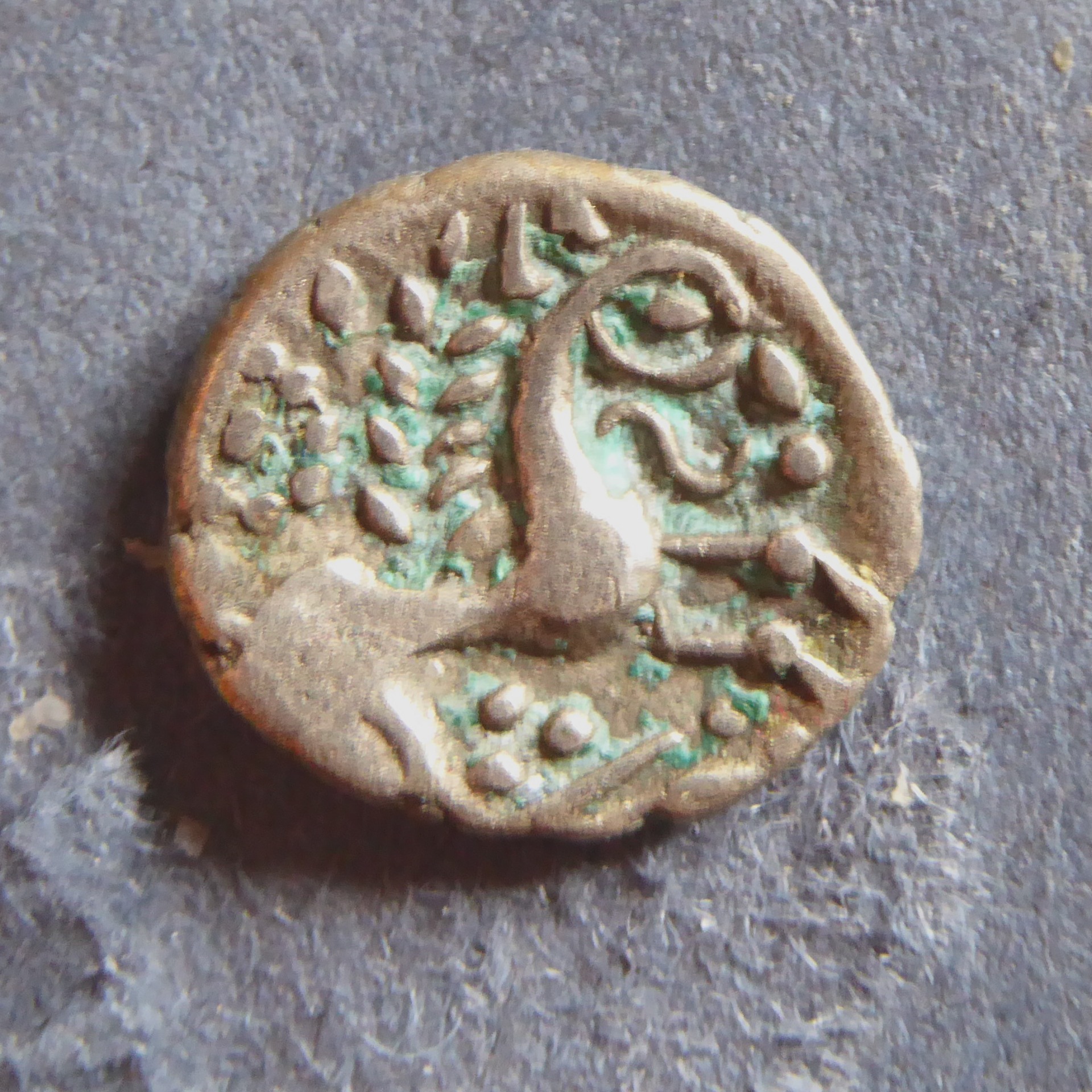When the Romans walked in Forncett
Introductions to the history of Forncett frequently start by pointing out that our village is mentioned in the Domesday Book of 1086 AD. However, there were, of course, people living here long before that and, although we don't know much about them, they did leave their mark.
At least 75 archaeological finds have been recorded in Forncett, from a Neolithic axe head to a Saxon brooch, but one of the most spectacular finds is thought to have been the property of a Roman soldier. Around AD 60, when the Iceni people who inhabited this part of Norfolk were at war with the occupying Roman armies, a Roman soldier buried nearly 400 coins in a field in the Tas valley. Nearly 2000 years later, on 26th July 1997, an amateur metal detectorist from Long Stratton, called Paul Thrower, unearthed the remains of a Roman pot and its contents which came to be known as "The Forncett Hoard". The hoard contained 336 silver Iceni coins and 45 silver Roman denarii.

Paul's find was subsequently declared to be "treasure trove" and some of the coins are now held by the British Museum, by Wymondham Heritage Society, and by Diss Museum. Others are now in private ownership.
Paul Thrower very kindly donated one of the Iceni coins to Forncett History Group (see photo above) and it was adopted as the Group's logo which appears on our publications and on our website. These Iceni silver coins are quite small, around 1cm in diameter and weighing about 1 gram. They almost invariably showed a stylised horse on one face.
You can read the full story of The Forncett Hoard here.
Mike Merrick and John Webster
